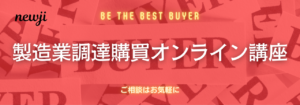- お役立ち記事
- Die-casting defect mechanism and countermeasure technology, as well as high-quality and long-life mold technology

Die-casting defect mechanism and countermeasure technology, as well as high-quality and long-life mold technology

目次
Understanding Die-Casting Defects
Die-casting, a prevalent manufacturing process, is known for producing metal parts with high precision and smooth surface finishes.
However, like all manufacturing techniques, it is susceptible to defects.
Understanding these defects and implementing countermeasures is crucial for ensuring high-quality outputs.
Some of the common defects in die-casting include porosity, misruns, cold shuts, and shrinkage.
Porosity
Porosity is a prevalent issue in die-casting that affects the integrity of the cast part.
It occurs when gas is trapped within the casting, leading to voids or pockets.
This can weaken the part and may cause leaks, if the component is designed to hold fluids.
Countermeasures include optimizing injection speed, temperature control, and vacuum-assisted casting.
Balancing these parameters helps reduce the entrapment of gas, ensuring a denser and more robust casting.
Misruns and Cold Shuts
Misruns happen when the molten metal solidifies before completely filling the die cavity.
Similarly, cold shuts occur when two streams of molten metal meet but do not fuse completely, resulting in weak lines on the surface.
To mitigate these issues, maintaining appropriate temperatures and ensuring efficient mold design is vital.
Preheating the die and adjusting flow speeds can improve the metal flow, preventing premature solidification.
Shrinkage
Shrinkage is a volume reduction defect that occurs during the solidification process.
As the metal cools and contracts, voids are formed in the thicker sections of the casting.
Using chills, which are metal inserts that facilitate quicker cooling, can distribute cooling more evenly across the mold.
Additionally, employing directional solidification techniques helps guide the solidifying metal, minimizing shrinkage defects.
Countermeasure Technologies for Die-Casting Defects
Effective countermeasure technologies are critical for reducing defect rates and enhancing product quality in die-casting.
These technologies focus on process optimization, mold design, and real-time monitoring.
Process Optimization
Process optimization entails adjusting variables such as temperature, pressure, and timing to improve casting outcomes.
Advanced simulation software can predict potential issues by modeling the entire die-casting process.
This allows manufacturers to tweak parameters before actual production, reducing trial-and-error and enhancing efficiency.
Mold Design
Innovative mold design is fundamental to minimizing die-casting defects.
A well-designed mold not only facilitates smoother metal flow but also aids in effective cooling.
Using computer-aided design (CAD) software, manufacturers can simulate different scenarios to identify the best mold configurations.
Moreover, incorporating features like vents and overflows can help eliminate trapped gases and reduce porosity.
Real-Time Monitoring
Real-time monitoring systems are essential for maintaining quality control in die-casting production.
These systems use sensors to track variables such as temperature and pressure during the casting process.
Data collected can be analyzed to detect anomalies, allowing for immediate adjustments.
In this way, manufacturers are able to maintain consistent quality and reduce waste.
Embracing High-Quality and Long-Life Mold Technology
Achieving high-quality and long-life mold technology is a cornerstone of successful die-casting operations.
The durability and performance of the mold play a significant role in the quality of the finished product.
Mold Material Selection
Choosing the right material for mold construction is critical.
Materials must withstand high temperatures and pressures while resisting wear and corrosion.
Alloys such as H13 tool steel are popular due to their durability and thermal fatigue resistance.
An optimal mold material minimizes wear and extends the service life of the mold.
Surface Treatment
Surface treatment methods enhance the mold’s performance and longevity.
Techniques like nitriding and physical vapor deposition (PVD) create harder surface layers, improving wear resistance and reducing maintenance needs.
These treatments ensure that molds last longer, supporting consistent casting quality over time.
Maintaining Mold Integrity
Regular maintenance is crucial for ensuring mold integrity and performance.
Routine inspections help identify wear, cracks, or other anomalies early, allowing for timely repairs.
Proper cleaning and lubrication of mold components also reduce friction and wear, further extending the mold’s lifespan.
Conclusion
Die-casting offers numerous benefits for producing complex metal parts efficiently.
However, addressing defects through process optimization, innovative mold design, and advanced monitoring systems is critical for achieving high quality.
Embracing high-quality and long-life mold technology will not only improve product outcomes but also enhance the sustainability of die-casting operations.
By focusing on these aspects, manufacturers can deliver superior products and maintain a competitive edge in the market.
 資料ダウンロード
資料ダウンロード
QCD管理受発注クラウド「newji」は、受発注部門で必要なQCD管理全てを備えた、現場特化型兼クラウド型の今世紀最高の受発注管理システムとなります。
 NEWJI DX
NEWJI DX
製造業に特化したデジタルトランスフォーメーション(DX)の実現を目指す請負開発型のコンサルティングサービスです。AI、iPaaS、および先端の技術を駆使して、製造プロセスの効率化、業務効率化、チームワーク強化、コスト削減、品質向上を実現します。このサービスは、製造業の課題を深く理解し、それに対する最適なデジタルソリューションを提供することで、企業が持続的な成長とイノベーションを達成できるようサポートします。
 製造業ニュース解説
製造業ニュース解説
製造業、主に購買・調達部門にお勤めの方々に向けた情報を配信しております。
新任の方やベテランの方、管理職を対象とした幅広いコンテンツをご用意しております。
 お問い合わせ
お問い合わせ
コストダウンが利益に直結する術だと理解していても、なかなか前に進めることができない状況。そんな時は、newjiのコストダウン自動化機能で大きく利益貢献しよう!
(β版非公開)





